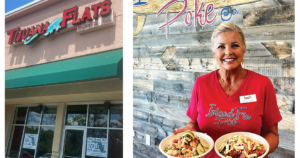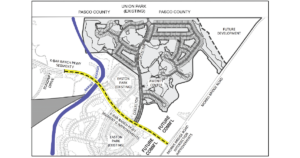
It’s no secret that the S.R. 54/56 corridor is a difficult drive. Whether you’re going a few miles from Wesley Chapel to Land O’Lakes, or all the way to New Port Richey, the 25-mile stretch from Bruce B. Downs (BBD) Blvd. to U.S. 19 can be a nightmare to traverse, and Pasco County transportation planners are looking into ways to improve the corridor with a new initiative called Vision 54/56.
During the next seven months, the Pasco County Metropolitan Planning Organization (MPO) is holding meetings at Rasmussen College (18600 Fernview St. in Land O’Lakes) to gather input from the public to use while coming up with alternatives to improve the S.R. 54/56 corridor during the next two decades.
A part of the MPO’s “Mobility 2040” Long Range Transportation Plan (LRTP), the Vision 54/56 study will be conducted using two “Task Forces,” one to study the corridor east of U.S. 41 to BBD (which includes the Wesley Chapel area) and another to study the area from U.S. 41 west to U.S. 19.
Each Task Force is comprised of nine individuals from local chambers of commerce and civic groups. The task force that will represent Wesley Chapel includes Greater Wesley Chapel Chamber of Commerce (WCCC) CEO Hope Allen, Sandy Graves of the Central Pasco Chamber of Commerce, Steve White of the Pasco Alliance of Community Associations, the Pasco Economic Development Council’s Brent Nye, project developer Joe Cimino, MPO Citizen Advisory Committee members Christie Zimmer and Cliff McDuffie, as well as citizens-at-large Debby Catanzaro and former Wesley Chapel Noon Rotary president Kelly Mothershead.
The Force is tasked with coming up with a total of six alternatives for improving transportation along the S.R. 54/56 corridor, which is the same stretch of road for which a private developer proposed an elevated toll road in 2013. However, that idea officially was abandoned last May. Phase one of the Task Force aims to educate the public and facilitate possible solution alternatives, which will be presented to the MPO Board. Regardless of the alternative ultimately chosen, the corridor will not be widened further than six lanes, which already exists in many sections, including S.R. 56 through Wesley Chapel.
The first meeting of Phase One was held on Sept. 24. In addition to Task Force members, Pasco Transportation Manager Jim Edwards, chief assistant county attorney David Goldstein, transportation engineer Ali Atefi and other members of the MPO and county staff also were in attendance.
 “We’re not reinventing the wheel,” Edwards told the Task Force. “There is a litany of alternatives out there, probably about 19, and we’ll be narrowing those down.”
“We’re not reinventing the wheel,” Edwards told the Task Force. “There is a litany of alternatives out there, probably about 19, and we’ll be narrowing those down.”
Edwards said that he hoped the Task Force would be visionaries and report what the citizenry thinks should be done
As Edwards and staff went through a presentation of many of the alternatives that already have been identified—including raised express lanes, overpasses, express bus lanes, light rail and other options, Atefi said that Pasco’s population is expected to grow to 905,000 by 2040 (an increase of more than 446,000), with 135,000 people moving into the S.R. 54/56 corridor.
“That’s 35-percent of the county’s growth,” Atefi said. “Imagine if development moves faster.”
Executive planner Matt Armstrong also addressed the Task Force, encouraging members to take the job seriously and try to really look ahead.
“We can’t go backwards in development,” Armstrong said. “We have to make these decisions now. (Pasco is) not urban yet, but (it) will be. As urban planners, we try to look at the crystal ball and be ready.”
Phase Two will evaluate the alternatives submitted in Phase One and gather more public input about the alternatives. The Task Force will then select a preferred alternative and develop an implementation plan to present to the MPO.
“The first meeting was primarily an educational session to give everyone background on the challenges already addressed on the corridor and some previously proposed solutions,” Allen says. “I learned a lot and the county has done a lot of work to prepare for the future of that corridor.”
Allen explains that she and her fellow Task Force members have been armed with a lot of information to review about previous proposed projects, possible solutions and corridor studies. She says that a much more in-depth conversation about the alternatives and possible solutions will take place at the next meeting, scheduled for 5:30 p.m. on Tuesday, December 1, again at Rasmussen College in Land O’Lakes. The public is welcome to attend and provide input to the Task Force.
For more info, please visit Vision54-56.com.




No comment yet, add your voice below!